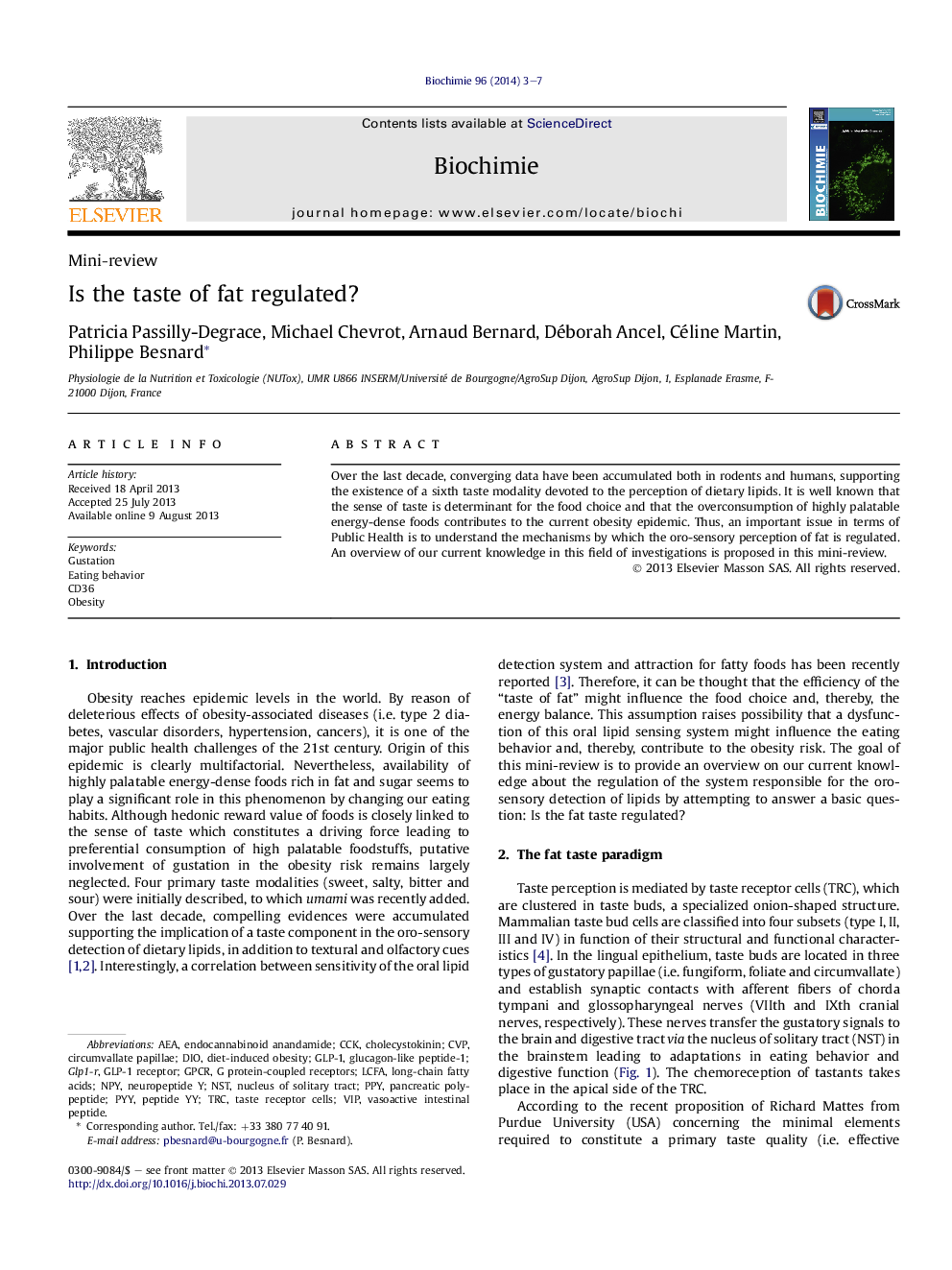| Article ID | Journal | Published Year | Pages | File Type |
|---|---|---|---|---|
| 8305907 | Biochimie | 2014 | 5 Pages |
Abstract
Over the last decade, converging data have been accumulated both in rodents and humans, supporting the existence of a sixth taste modality devoted to the perception of dietary lipids. It is well known that the sense of taste is determinant for the food choice and that the overconsumption of highly palatable energy-dense foods contributes to the current obesity epidemic. Thus, an important issue in terms of Public Health is to understand the mechanisms by which the oro-sensory perception of fat is regulated. An overview of our current knowledge in this field of investigations is proposed in this mini-review.
Keywords
TRCCVPPYYDIOGLP-1GPCRCCKCD36VIPNPYLCFANSTAEAPPyG protein-coupled receptorsLong-chain fatty acidsEating behaviortaste receptor cellsObesitycircumvallate papillaeNucleus of solitary tractPancreatic polypeptideglucagon-like peptide-1peptide YYvasoactive intestinal peptidediet-induced obesitycholecystokiningustationGLP-1 receptorNeuropeptide Y
Related Topics
Life Sciences
Biochemistry, Genetics and Molecular Biology
Biochemistry
Authors
Patricia Passilly-Degrace, Michael Chevrot, Arnaud Bernard, Déborah Ancel, Céline Martin, Philippe Besnard,
